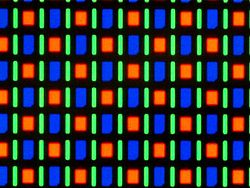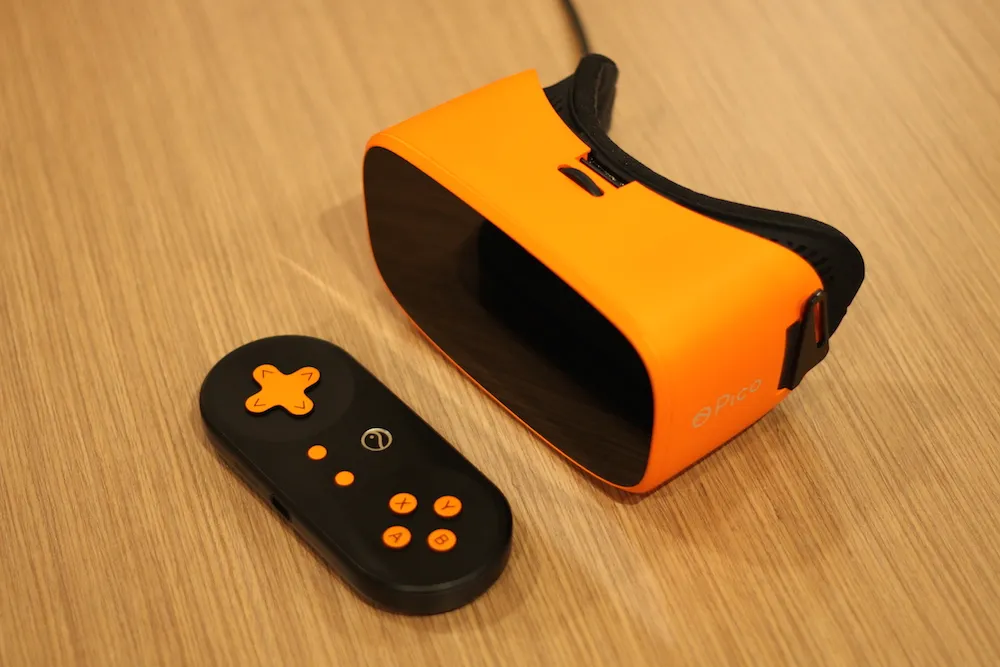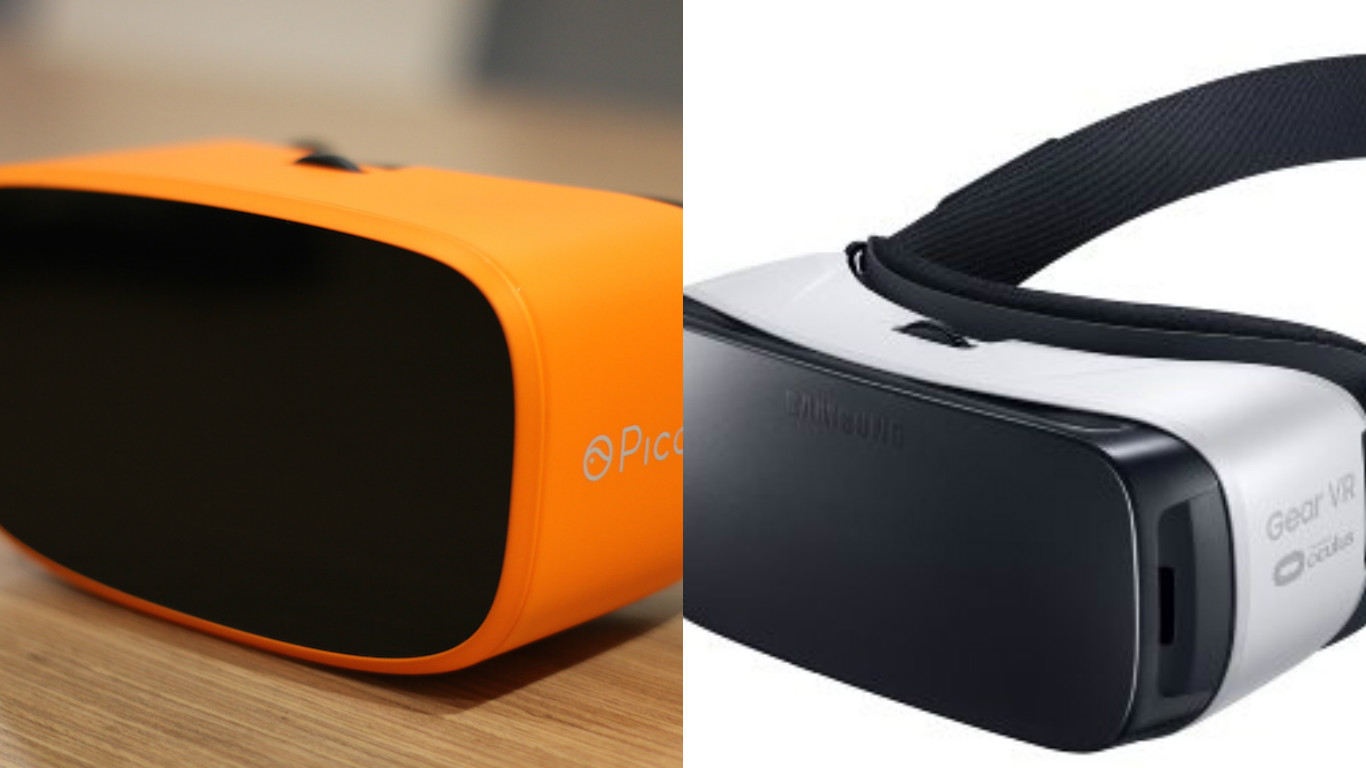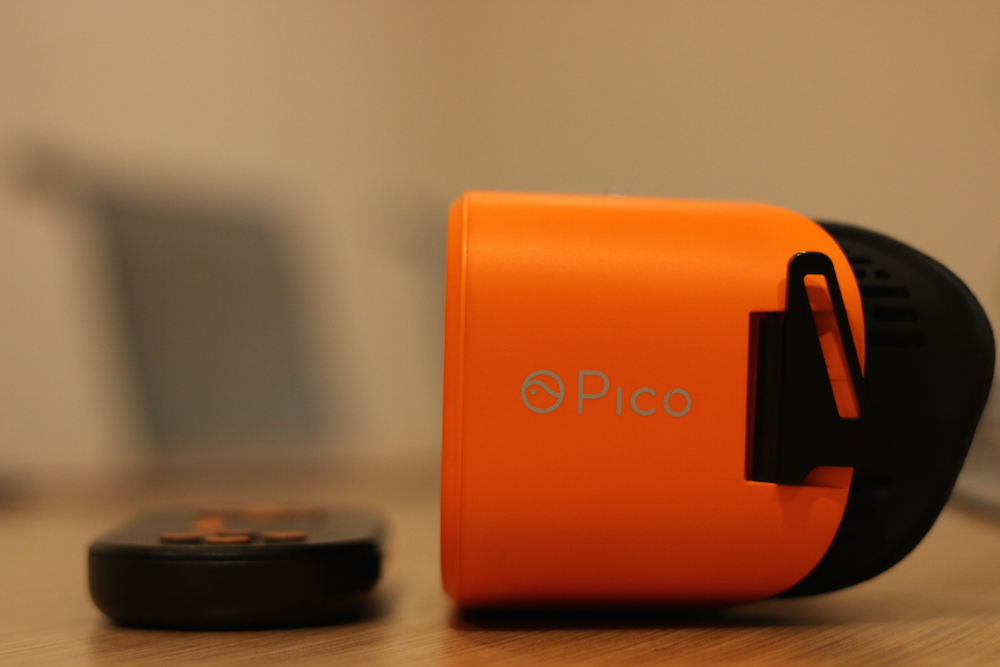Pico Neo, a Chinese based virtual reality company, will make E3 2016 the United States debut for its upcoming standalone VR headset.
The Pico Neo VR System is a wireless, mobile VR headset. As such, it does share many things aesthetically with the standard-setter for that particular marketplace: the Samsung and Oculus produced Gear VR. However, unlike the Gear, the Pico Neo does not depend on a smartphone for its processing, display, and motion tracking power.
Instead, the system uses an, “Android 6.0 Qualcomm® Snapdragon™ 820 processor and two 1k AMOLED displays,” in order to render its experiences. Another unique element of the Pico Neo’s design is that it utilizes, “a two-part structure with the device’s mainframe resting within a gamepad to give users a lighter mobile VR headset experience.”
Engagdget described this system as a “dumb VR headset with a smart controller.”
For those that aren’t aware, AMOLED stands for Active Matrix Organic Light Emitting Diode. These screens run a thin screen over a matrix running electric current. The electricity interacts with the organic diodes in the screen, causing them to light up to the proper hues necessary to display images. This process allows AMOLED screens to be far thinner than their basic LED counterparts as it does not require the display to have a backlight.
A thin screen would certainly be a priority for a mobile headset such as this, but it should also be noted that the gold standard for modern VR headsets are the low-persistence OLED screens that can be found in the Oculus Rift or The HTC Vive. Persistence is essentially means that pixels remain illuminated longer than they should when a VR user moves his or her head. This causes the sometimes nauseating, screen-jumping effect known as “smear” which is far from optimal for immersion.

AMOLED displays have been the go-to for mobile VR. The smartphones, such as the Samsung Galaxy S6, utilize that screen type. That is quickly changing, however, now that the Samsung’s new S7 line of smartphones come packing OLED displays.
All this isn’t to say that the Pico Neo will be a flop, just that it may be a bit behind the absolute bleeding edge of mobile VR technology.
Pico Neo is targeting a “late 2016” commercial release for its headset.































